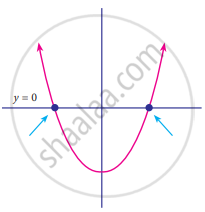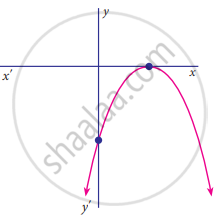Advertisements
Advertisements
Question
Verify whether the following zeroes of the polynomial, indicated against them.
p(x) = (x + 1) (x – 2), x = – 1, 2
Solution
If x = −1 and x = 2 are zeroes of polynomial p(x) = (x + 1) (x − 2), then p(−1) and p(2) should be 0.
Here, p(−1) = (−1 + 1) (−1 − 2)
= 0 (−3)
= 0
Also, p(2) = (2 + 1) (2 − 2)
= 3 (0)
= 0
Therefore, x = −1 and x = 2 are zeroes of the given polynomial.
APPEARS IN
RELATED QUESTIONS
Find p(0), p(1) and p(2) for the following polynomial:-
p(x) = x3
Verify whether the following zeroes of the polynomial, indicated against them.
`p(x) = 3x + 1, x = -1/3`
Verify whether the following zeroes of the polynomial, indicated against them.
p(x) = x2, x = 0
Find the zero of the polynomial in the following case:
p(x) = 2x + 5
Verify whether the indicated numbers is zeroes of the polynomials corresponding to them in the following case:
`f(x)=x^2- 1,x=1,-1`
Verify whether the indicated numbers is zeroes of the polynomials corresponding to them in the following case:
`g(x)=3x^2-2,` `x=2/sqrt3 2/sqrt3`
Verify whether the following are zeros of the polynomial indicated against them, or not
p(x) = 2x − 1, x = `1/2`
Find the number of zeros of the following polynomial represented by their graph

Find the number of zeros of the following polynomial represented by their graph

One of the zeroes of the polynomial 2x2 + 7x – 4 is ______.
